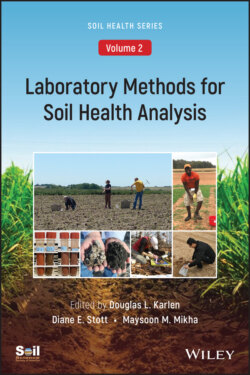Читать книгу Laboratory Methods for Soil Health Analysis, Volume 2 - Группа авторов - Страница 31
Timing and Frequency of Sampling
ОглавлениеAppropriate timing and frequency of sampling for soil health assessments will vary based on evaluator goals, indicators chosen, environmental conditions, management operations, and available resources. Evaluators must gauge tradeoffs associated with quantifying seasonal variability versus conducting an assessment at a single point in time. If done appropriately, the latter sampling option would select a time guided by knowledge of seasonal and/or annual variability and the timing of management operations. As shown by previous soil health evaluations, selecting an optimal sampling time is difficult (Wuest, 2015; Pikul et al., 2006; Mikha et al., 2006; Wienhold et al., 2006). Accordingly, sampling time decisions should be based by assessment objectives, recognizing that both management disturbances and environmental conditions can lead to misleading outcomes if not properly accounted for.
It is also important to recognize that due to temporal variability in every soil health indicator, the benefit to cost ratio will be low if sampling occurs too frequently. Annual sampling may be desirable for questions focusing on biological indicators, but for long‐term soil health changes, sampling every three to five years or at the end of a recurring period inherent to the production system (e.g., following a crop rotation or grazing cycle) will generally be sufficient. It is also important to collect samples at approximately the same time of year or under similar weather patterns to minimize variation in soil water content and temperature (Dick et al., 1996).
